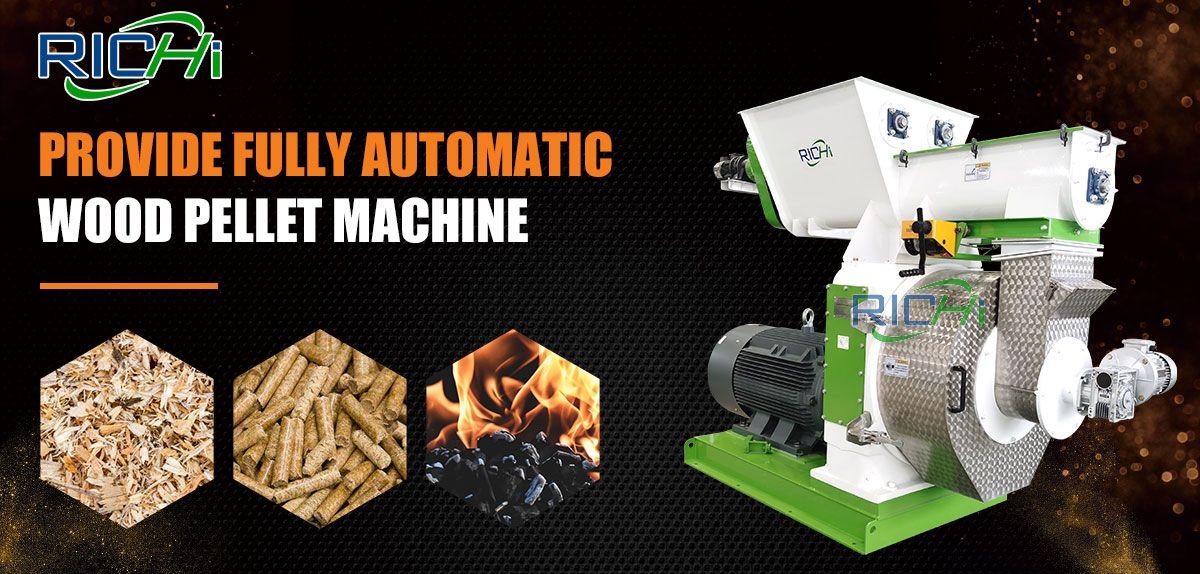In the dynamic landscape of renewable energy, biomass stands out as a pivotal resource for reducing reliance on fossil fuels and mitigating climate change. Among biomass feedstocks, wood chips have gained prominence due to their abundance and diverse applications. Wood chip pellet machines are specialized equipment crucial for converting wood chips into compact, energy-dense pellets, offering an efficient fuel source for heat and power generation.
The Significance of Wood Chip Biomass
Wood chip biomass offers several key advantages as a renewable energy source:
- Abundant and Renewable: Derived from forestry residues, sawmill by-products, and other woody materials, wood chips can be sourced sustainably, ensuring a continuous biomass feedstock.
- High Energy Density: Wood chip pellets boast a higher energy density compared to many other biomass sources, enhancing their efficiency and cost-effectiveness.
- Low Emissions: Combusting wood chip pellets typically results in lower emissions than traditional fossil fuels, supporting cleaner energy solutions.
- Versatility: Suitable for a wide range of applications including residential heating, industrial boilers, and power plants, providing flexibility in energy production.
- Local Sourcing: Often available locally, wood chip biomass reduces transportation costs and supports regional economies, promoting energy independence.
The Role of Wood Chip Pellet Machines
Wood chip pellet machines play a critical role in converting raw wood chip biomass into efficient fuel sources:
- Increased Energy Density: Through compression and densification, these machines significantly enhance the energy density of wood chips, facilitating easier transportation, storage, and combustion.
- Consistent Quality: Advanced machines incorporate stringent quality control measures to ensure uniform pellet size, density, and moisture content, optimizing combustion and energy output.
- Efficient Processing: Integrated workflows streamline biomass processing stages such as drying, grinding, and pelleting, boosting overall efficiency and productivity.
- Reduced Emissions: Wood chip pellets produced by these machines contribute to lower emissions, aligning with sustainable energy goals.
- Versatility: Machines can adapt to process various wood chip feedstocks, offering flexibility in sourcing raw materials.
- Scalability: Available in diverse capacities, these machines can scale operations to meet increasing demand across residential, commercial, and industrial sectors.
Key Components of Wood Chip Pellet Machines
Efficient operation depends on essential components:
- Drying System: Crucial for reducing wood chip moisture to optimal levels for proper pellet formation and combustion characteristics.
- Grinding and Milling: Equipment essential for achieving desired particle size and texture, facilitating effective pelleting.
- Mixing and Conditioning: Systems ensuring homogeneous distribution of biomass material and optimal moisture levels to maintain pellet quality.
- Pelleting Unit: Core component that compresses and extrudes wood chip material into dense pellets through heat and pressure application.
- Cooling and Drying: Systems post-pelleting for stabilizing pellets and preventing moisture buildup, ensuring long-term storage stability.
- Quality Control and Monitoring: Rigorous monitoring systems and laboratory tests to uphold stringent quality and safety standards.
- Automation and Process Control: Advanced systems ensuring consistent product quality, enhancing efficiency, and minimizing downtime.
- Auxiliary Systems: Supporting equipment like material handling and dust collection systems for safe and efficient operations.
Related post: wood pellet making machine price
Factors Influencing Wood Chip Pellet Machine Success
Critical factors include:
- Wood Chip Supply and Quality: Securing reliable, high-quality wood chips is crucial for consistent pellet production and profitability.
- Expertise: Employing skilled biomass specialists and engineers to optimize production processes and ensure consistent pellet quality.
- Technology and Automation: Investments in advanced technologies improve efficiency, reduce costs, and enhance product consistency.
- Sustainability: Incorporating energy-efficient technologies and sustainable practices to minimize operational impacts.
- Regulatory Compliance: Adhering to emissions, air quality, and environmental standards for long-term operational viability.
- Workforce: A skilled and trained workforce is essential for efficient machine operation and maintenance.
- Continuous Improvement: Embracing a culture of innovation and improvement to sustain competitiveness in the biomass energy market.
Opportunities and Future Outlook
The future outlook for wood chip pellet machines is promising, driven by:
- Increasing Demand for Renewable Energy: Global efforts to reduce greenhouse gas emissions support growing demand for sustainable energy sources like wood chip pellets.
- Technological Advancements: Ongoing research in biomass processing, pellet quality optimization, and combustion technologies fosters innovation in machine design and energy systems.
- Sustainable Forestry Practices: Responsible wood harvesting and reforestation efforts ensure a steady supply of wood chip biomass.
- Decentralized Energy Solutions: Localized production trends create opportunities for community-based pellet machine operations, enhancing energy independence.
- International Collaboration: Global investments drive the development of new facilities, promoting economic growth and technological advancement.
In conclusion, wood chip pellet machines are pivotal in harnessing wood chip biomass for sustainable energy solutions. Investment in these technologies supports renewable energy goals, promotes environmental stewardship, and fosters economic development. As global priorities shift towards sustainability, wood chip pellet machines will continue to innovate and lead in advancing biomass energy solutions for a cleaner, resilient future.


